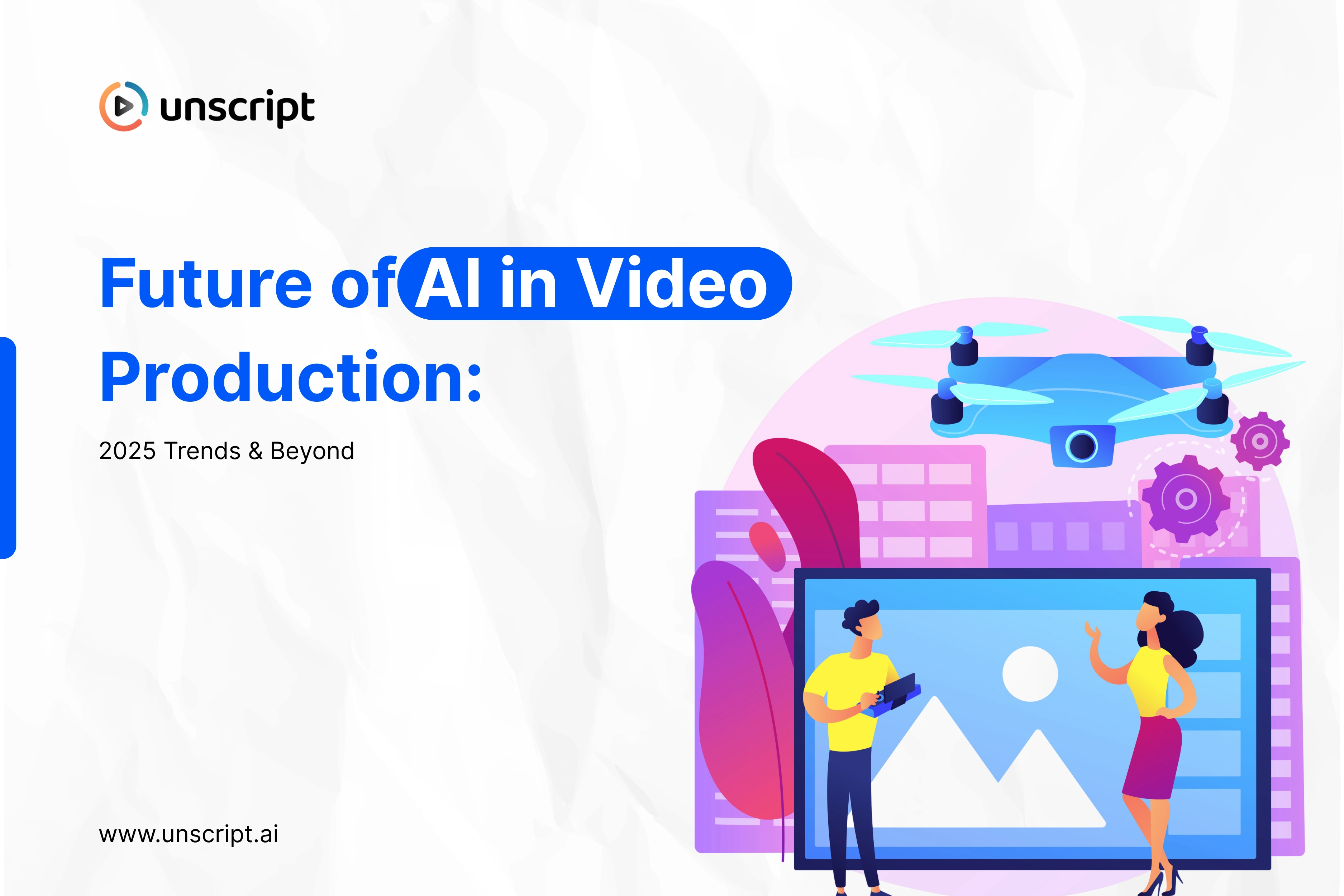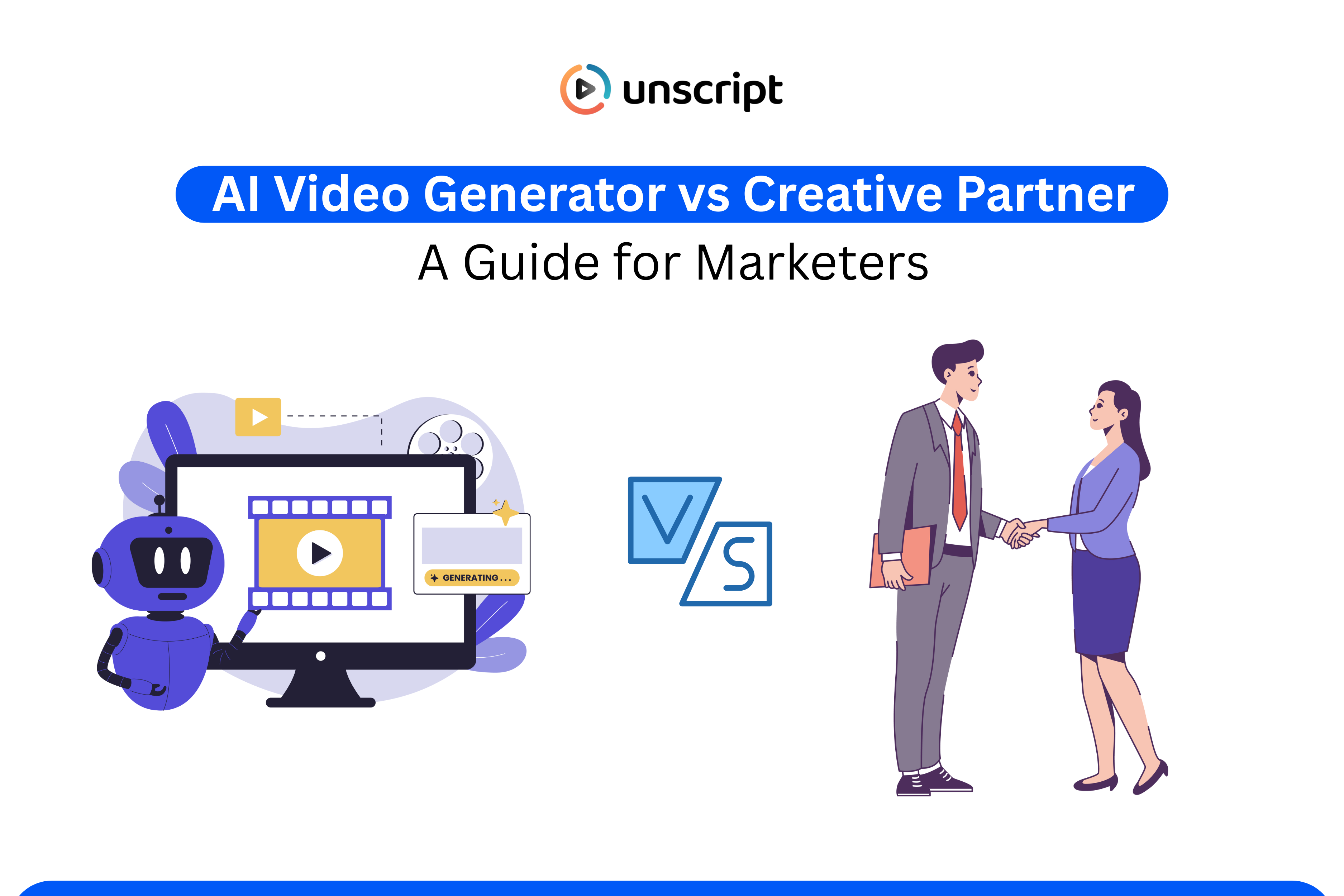April 22, 2025
The Future of Synthetic Media: How AI is Transforming Content Creation
Explore the evolving landscape of synthetic media, from emerging trends to key challenges. Discover the opportunities that lie ahead—read the article now.
Synthetic media is changing the way people create and consume content. AI-generated content is now shaping videos, images, speech, and text. Deepfake technology, virtual influencers, and AI-generated music are making media production more advanced. Businesses and creators use synthetic media to personalize experiences and automate content creation. Machine learning and deep learning power these innovations, making AI tools smarter.
Traditional media relies on human effort, but AI-generated media speeds up production. Synthetic voices and speech synthesis improve accessibility. Virtual avatars and digital humans enhance engagement in social media and entertainment. AI-generated text helps businesses automate communication.
The rise of synthetic media brings opportunities and challenges. It enhances creativity but also raises concerns about deepfakes and misinformation. Companies must balance innovation with ethical responsibility. As AI-generated media becomes more prevalent, understanding synthetic media ethics is essential for ensuring responsible and transparent digital storytelling. The future of synthetic media depends on how industries adopt and regulate these technologies. AI-driven content will continue shaping the digital world.
8 Key Takeaways You Should Know

- Synthetic media is reshaping content creation – AI-generated videos, images, text, and speech are transforming industries like marketing, entertainment, and education.
- Artificial intelligence enhances efficiency – Machine learning and deep learning enable faster, cost-effective, and scalable media production.
- Deepfake technology and AI tools power innovation – Virtual influencers, synthetic voices, and AI-generated art are redefining digital storytelling.
- Personalized content is the future – AI-generated media allows brands to create hyper-personalized experiences across multiple languages and platforms.
- Ethical concerns remain a challenge – Deepfakes and misinformation require responsible AI use and industry regulations to prevent misuse.
- AI supports, not replaces, human creativity – Synthetic media automates tasks but still requires human oversight for originality and storytelling.
- Industries must adapt to AI-driven media – Businesses that integrate synthetic media will gain a competitive advantage in the evolving digital landscape.
- The future of synthetic media is now – AI-driven content creation is no longer experimental; it’s an essential part of the modern media landscape.
What is Synthetic Media?
Synthetic media refers to AI-generated content, including videos, images, text, and speech. Machine learning and deep learning power these technologies to create realistic digital content. AI-generated media automates content production and enhances personalization. Businesses, marketers, and creators use synthetic media to scale media creation.
Deepfake technology replaces a person's face with another’s in videos. Voice cloning replicates human voices with artificial voice technology. Synthetic video and image synthesis create hyper-realistic visuals. AI-generated text automates content writing and chat responses. Speech synthesis produces synthetic voices for accessibility and branding. The rise of synthetic media is revolutionizing content creation, allowing brands to produce hyper-realistic AI-driven visuals and experiences.
Virtual influencers and digital avatars engage audiences on social media. AI-generated music and synthetic audio redefine entertainment. Text-to-speech and natural language generation improve user interactions. These technologies transform traditional media and open new possibilities for content creators. Synthetic media is shaping the future of digital content and human-computer interaction.
Current State of Synthetic Media
Synthetic media is transforming content creation across industries. AI-generated content is now widely used in videos, images, speech, and text. Businesses, brands, and creators leverage synthetic media technologies to automate production and enhance engagement. Machine learning and deep learning power these advancements, making AI-generated media more realistic. Companies are integrating digital humans into virtual assistants and customer service platforms to enhance engagement and automate interactions.
Key Categories of Synthetic Media Today

- Videos: Deepfake technology enables video synthesis, replacing one person’s face with another’s. AI-generated video enhances media production, advertising, and entertainment.
- Images: AI-generated images and image synthesis create hyper-realistic visuals. Generative adversarial networks (GANs) improve synthetic image quality.
- Speech: Speech synthesis and synthetic voices make content accessible. Voice cloning replicates human voices for branding and personalization.
- Digital Humans & Avatars: Virtual influencers and digital avatars engage audiences on social media platforms. AI-generated digital humans power virtual assistants and customer support.
- AI-Generated Text: Natural language generation (NLG) automates text creation. AI-generated text helps in chatbots, content production, and media automation.
Synthetic media is redefining traditional media and shaping the digital world. AI tools continue to push the boundaries of media creation. Content creators and businesses can streamline production with the best tools for synthetic media, enhancing AI-generated videos, voice synthesis, and digital art.
Pros and Cons of Synthetic Media
Synthetic media is revolutionizing content creation. AI-generated content improves efficiency but also raises ethical concerns. Businesses, creators, and media platforms use synthetic media technologies to automate workflows. Machine learning and deep learning drive innovation in AI-generated media.
Advantages of Synthetic Media

- Democratizing Content Creation: AI tools enable individuals and businesses to create synthetic media without expensive production costs.
- Personalized Content: AI-generated text, synthetic voices, and virtual avatars deliver tailored experiences across multiple languages.
- Faster Media Production: AI-generated images, video synthesis, and speech synthesis accelerate content creation.
- Accessibility Enhancements: Text-to-speech and artificial voice technology improve user experience for diverse audiences.
- New Opportunities in Entertainment: AI-generated music, deepfake technology, and virtual influencers redefine the entertainment industry.
Challenges of Synthetic Media

- Misinformation Risks: Deepfake technology enables fake news and identity fraud.
- Ethical Concerns: AI-generated media raises questions about human creativity and content authenticity.
- Privacy Issues: Voice cloning and synthetic video can be misused for impersonation.
- Dependency on AI Systems: Overreliance on AI tools may reduce original human input in media creation.
Synthetic media offers immense potential but requires responsible use. Industries must balance innovation with ethical considerations. The advancements in deepfake technology are pushing the boundaries of AI-generated content while raising critical ethical concerns.
The Future of Synthetic Media: What Lies Ahead?
Synthetic media is rapidly evolving with advancements in artificial intelligence and machine learning. Businesses and creators use AI tools to create content faster and more efficiently. In the not-too-distant future, AI-generated media will reshape the media landscape, making digital experiences more interactive. Businesses leveraging AI in content marketing can automate content strategies, personalize customer experiences, and improve audience targeting.
Key Trends Shaping the Future

- AI-Generated Art & Visual Content: AI models create synthetic media, including image-generated visuals, new videos, and deep fakes that blur the line between reality and fiction.
- Virtual Reality & Mixed Reality Integration: Virtual reality and mixed reality will merge with AI-generated content, enhancing user interactions in gaming, social media, and digital marketing.
- Advanced Speech & Audio Synthesis: Speech synthesis and synthetic audio will produce lifelike voices. Users will replicate their own voice using AI, personalizing digital assistants and interactive experiences.
- Virtual Celebrities & Digital Avatars: AI-driven virtual celebrities will dominate entertainment, replacing traditional influencers with hyper-realistic avatars. A person’s face replaces another’s in content, expanding storytelling possibilities.
- Personalized Media Created by AI: AI will create completely tailored media experiences. From news to entertainment, content will be auto-generated to match user preferences. Audio synthesis and AI-powered narration will transform the way people consume content.
Challenges & Considerations
AI tools will enhance the creative process, but ethical concerns remain. Computer systems generate deepfakes, raising concerns about misinformation. While creating synthetic media offers efficiency, ensuring authenticity is crucial. Existing media must adapt to these changes responsibly.
The future of synthetic media is only a matter of time. AI will continue to evolve, enabling businesses and creators to develop their own models for digital storytelling. Conclusion: Synthetic media is here to stay, transforming industries and redefining content creation. The adoption of AI-generated content is transforming how brands scale their messaging, automate workflows, and produce high-quality digital assets.
Conclusion: The Future is Synthetic
The rise of synthetic media is reshaping how content is created and consumed. With artificial intelligence driving advancements, businesses and creators can now generate AI-powered videos, lifelike voices, and immersive digital experiences faster than ever. From virtual reality environments to AI-generated art, technology is enhancing storytelling, making media more engaging and accessible.
The integration of speech synthesis and synthetic audio allows brands to deliver personalized content at scale. Virtual celebrities are gaining popularity, while AI-generated media is becoming a core part of marketing, entertainment, and customer engagement. The shift in the media landscape means that traditional methods of production must evolve to keep up with these innovations.
However, the widespread use of deepfake technology raises concerns about misinformation and ethical implications. As AI continues to refine the creative process, businesses must find a balance between innovation and responsibility. The future of content creation is no longer a possibility—it’s happening now. Those who embrace synthetic media will lead in the next era of digital storytelling.
FAQ: Common Questions About Synthetic Media
1. Why Should You Care About Synthetic Media?
Because the future is synthetic and it is transforming how businesses, creators, and brands produce content. AI-driven tools make media creation faster, more cost-effective, and highly personalized. From marketing to entertainment, industries are leveraging AI to enhance digital storytelling.
2. What is Synthetic Media?
Synthetic media refers to AI-generated content, including videos, images, speech, and text. It uses technologies like deep learning, speech synthesis, and computer vision to create realistic digital content.
3. Can you Give Examples of Synthetic Media?
Yes. Some common examples include:
- Deepfake videos that replace one person’s face with another.
- AI-generated images used in marketing and design.
- Synthetic voices for audiobooks, customer support, and branding.
- Virtual influencers and digital avatars on social media.
4. How is Unscript.ai Related to Synthetic Media?
Unscript.ai is a leading AI-driven platform that helps businesses create high-quality AI-generated videos and synthetic media at scale. It enables brands to automate video production using advanced machine learning and deepfake technology while maintaining authenticity and engagement. Moreover, with their latest launch, AI video agent, you can create n number of videos without manual editing. The platform handles everything from storyboard to final video.
5. What are the Advantages of Synthetic Media?
- Faster content production with AI automation.
- Cost savings in media creation and post-production.
- Personalized experiences through AI-generated speech and text.
- Scalability for brands needing multilingual and customized content.
- Accessibility improvements with text-to-speech and voice cloning.
6. Is Synthetic Media Ethical?
Synthetic media presents ethical challenges, especially with deepfake technology and misinformation. Responsible AI use and regulations are necessary to prevent identity fraud, privacy issues, and manipulation.
7. How Does Synthetic Media Impact Traditional Content Creation?
Traditional content creation relies on manual work, while AI-generated media automates and enhances the process. Instead of replacing human creativity, synthetic media supports creators by streamlining workflows and enabling new storytelling formats.
8. Will AI-generated Content Replace Human Creativity?
No. AI is a tool that enhances creativity rather than replacing it. The creative process still requires human input, vision, and storytelling expertise. AI simply provides efficiency, automation, and new possibilities for content generation.
9. What Industries Benefit from Synthetic Media?
- Marketing & Advertising: Personalized video content and AI-powered branding.
- Entertainment: Virtual influencers, AI-generated music, and synthetic storytelling.
- E-learning: AI-generated voiceovers and multilingual educational content.
- Customer Support: AI-driven chatbots and synthetic voice assistants.
- Gaming & Virtual Reality: Lifelike avatars and immersive experiences.
10. What is the Future of Synthetic Media?
In the coming years, synthetic media will become even more advanced. AI-generated content, virtual reality, and deepfake technology will shape industries, making media more interactive, personalized, and accessible. Businesses that embrace these innovations will gain a competitive edge in the evolving digital landscape.















.png)





















.svg)
.svg)
%201.svg)








.svg)
